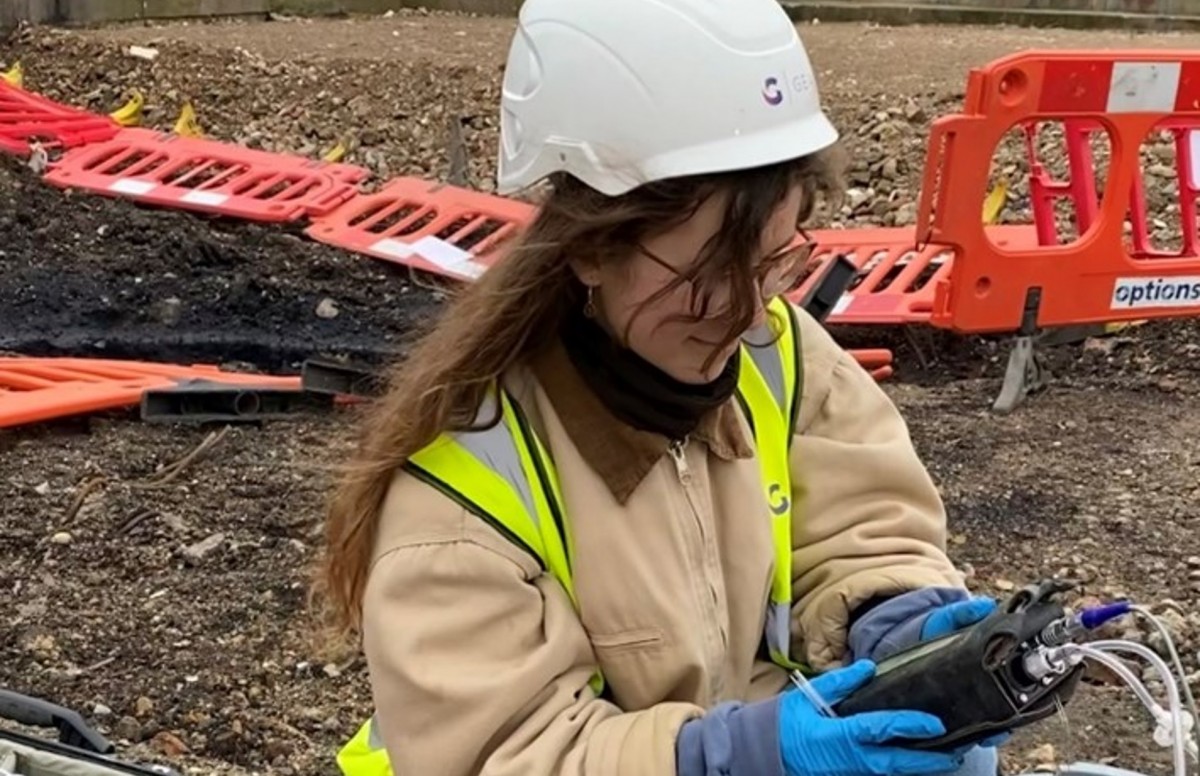A Biased View of Geotheta
A Biased View of Geotheta
Blog Article
The 2-Minute Rule for Geotheta
Table of ContentsThe Greatest Guide To GeothetaHow Geotheta can Save You Time, Stress, and Money.Geotheta for BeginnersGetting My Geotheta To WorkNot known Facts About Geotheta

They conduct site investigations, accumulate samples, execute laboratory tests, and analyze information to review the viability of the ground for construction tasks - Geotechnical Engineers. Based on their searchings for, geotechnical designers give recommendations for structure style, incline stability, retaining frameworks, and reduction of geotechnical threats. They work together with various other experts, such as designers, architectural engineers, and building groups, to make certain that geotechnical factors to consider are integrated right into the total project design and execution
By analyzing the behavior and properties of soil and rock, they can recognize potential geotechnical risks such as landslides, dirt settlement, or slope instability. Their experience helps protect against failings or crashes that might endanger lives and residential or commercial property. Here are some in-depth duties and responsibilities of a geotechnical designer: Website Investigation: Geotechnical engineers conduct website examinations to gather data on subsurface problems.
They interpret the data to understand the homes and actions of the soil and rock, including their stamina, permeability, compaction attributes, and groundwater problems. Geotechnical Evaluation and Design: Geotechnical engineers evaluate the data accumulated throughout site investigations to assess the security and viability of the site for building projects. They carry out geotechnical estimations and modeling to examine variables such as birthing capacity, settlement, incline security, lateral planet pressures, and groundwater circulation.
Geotheta Fundamentals Explained
Structure Style: Geotechnical engineers play an important duty in creating structures that can safely sustain the designated structure. They assess the dirt problems and lots demands to identify the proper foundation kind, such as shallow structures (e.g., grounds), deep foundations (e.g (https://geotheta.webflow.io/)., stacks), or specialized methods like soil enhancement. They take into consideration variables such as settlement restrictions, birthing capability, and soil-structure interaction to create ideal structure layouts
They assess construction strategies, screen site tasks, and conduct area evaluations to verify that the layout referrals are adhered to. If unexpected geotechnical concerns develop, they examine the situation and provide referrals for remediation or adjustments to the layout. Threat Evaluation and Mitigation: Geotechnical engineers examine geotechnical dangers and threats linked with the job website, such as landslides, liquefaction, or dirt disintegration.

Partnership and Interaction: Geotechnical designers function closely with various other specialists entailed in a project, such as engineers, structural engineers, and construction groups. Reliable interaction and collaboration are necessary to integrate geotechnical factors to consider into the total job style and construction process. Geotechnical engineers give technical experience, solution questions, and guarantee that geotechnical needs are fulfilled.
Some Known Incorrect Statements About Geotheta
Below are some sorts of geotechnical designers: Foundation Designer: Structure designers focus on making and examining structures for frameworks. They analyze the soil conditions, tons needs, and site qualities to determine the most ideal view website foundation kind and design, such as shallow structures, deep structures, or specialized methods like pile foundations.
They review the aspects influencing incline stability, such as soil residential properties, groundwater problems, and incline geometry, and develop strategies to avoid incline failings and reduce risks. Quake Designer: Quake engineers specialize in examining and designing frameworks to endure seismic forces. They assess the seismic threat of a website, assess dirt liquefaction possibility, and develop seismic style criteria to make sure the safety and durability of structures during quakes.
They perform field testing, gather examples, and examine the collected data to characterize the dirt residential properties, geologic formations, and groundwater problems at a website. Geotechnical Instrumentation Designer: Geotechnical instrumentation designers concentrate on surveillance and measuring the actions of dirt, rock, and frameworks. They mount and keep instrumentation systems that keep an eye on aspects such as soil negotiation, groundwater degrees, incline motions, and architectural displacements to evaluate performance and supply early warnings of potential problems.
Not known Details About Geotheta
They carry out tests such as triaxial examinations, loan consolidation tests, direct shear tests, and leaks in the structure tests to collect data for geotechnical analysis and layout. Geosynthetics Designer: Geosynthetics designers concentrate on the design and application of geosynthetic products, such as geotextiles, geogrids, and geomembranes. They utilize these materials to enhance soil stability, strengthen slopes, supply drain services, and control disintegration.
They tend to be investigative people, which means they're intellectual, reflective, and investigative. They are interested, systematic, sensible, analytical, and logical. Some of them are additionally social, suggesting they're kind, charitable, cooperative, patient, caring, useful, compassionate, tactful, and friendly - Engineer of Record.
In the workplace atmosphere, geotechnical engineers use specialized software application tools to execute computations, develop designs, and analyze data. They prepare records, evaluation job specs, interact with clients and staff member, and coordinate job activities. The workplace setup provides a conducive atmosphere for study, analysis, and partnership with various other professionals entailed in the job.
The Definitive Guide for Geotheta
They frequently see project sites to perform site investigations, assess geotechnical conditions, and collect data for evaluation. These brows through include traveling to different areas, sometimes in remote or challenging terrains. Geotechnical engineers may execute dirt tasting, conduct tests, and monitor building tasks to make sure that the geotechnical aspects of the project are being implemented properly.
Geotechnical designers also work in specialized geotechnical research laboratories. Geotechnical research laboratory designers work thoroughly in these settings, handling testing equipment, running instruments, and taping information.
Report this page